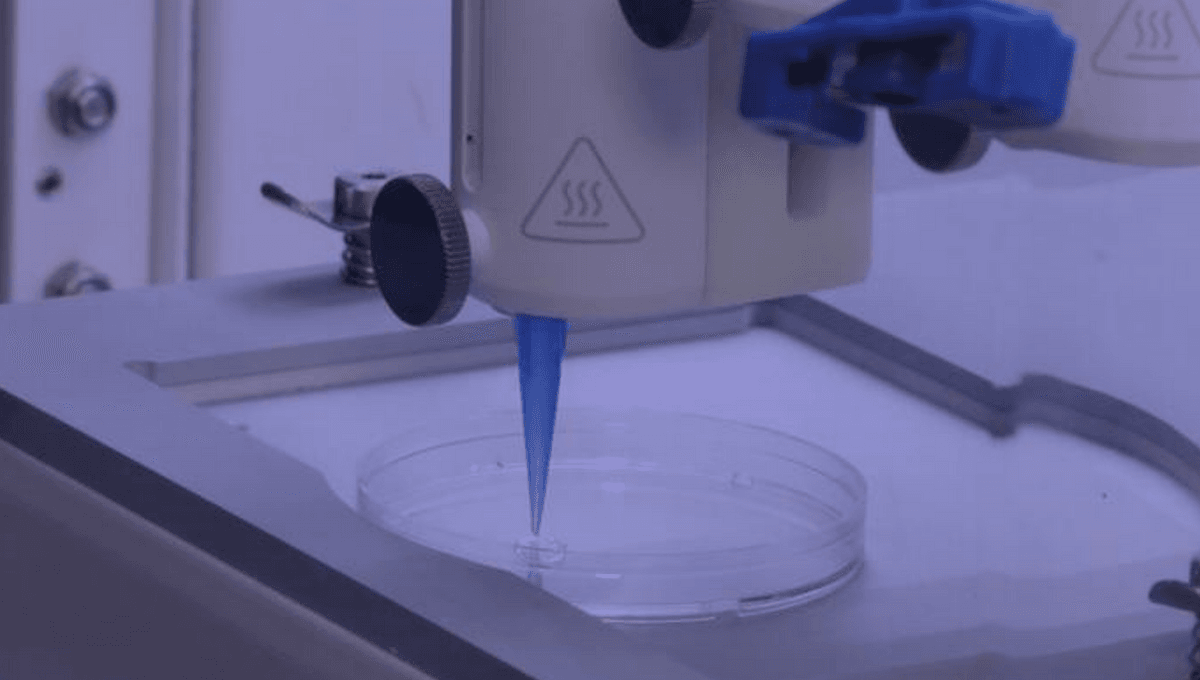
New research has seen scientists use 3D bioprinting to sprout hair follicle-like structures into lab-grown human skin tissue.
Researchers at the Rensselaer Polytechnic Institute in the US start the process by “growing “ samples of skin and follicle cells in a lab, after which they’re mixed with special proteins and other materials to create a so-called “bio-ink”.
This substance is then inserted into lab-grown skin using an extremely thin needle that builds up the structure layer by layer, just like any form of 3D printing. Eventually, the skin cells migrate to the channels surrounding the hair cells, creating hair follicle–like structures deeply embedded into the skin’s dermis layer.
As it stands, these artificial tissues only last for two to three weeks, which is not enough time for hair strands to develop. Nevertheless, given the challenges previously seen in this field, the team is pleased with the progress they’ve made.
“The reconstruction of hair follicles using human-derived cells has historically been a challenge. Some studies have shown that if these cells are cultured in a three-dimensional environment, they can potentially originate new hair follicles or hair shafts, and our study builds on this work,” Dr Pankaj Karande, an associate professor of chemical and biological engineering at the Rensselaer Polytechnic Institute, said in a statement.
“Our work is a proof-of-concept that hair follicle structures can be created in a highly precise, reproducible way using 3D-bioprinting. This kind of automated process is needed to make future biomanufacturing of skin possible,” he added.
While this might sound like a remedy for hair loss at first glance, cosmetic concerns are not the prime reason why this biotechnology is being developed. Instead, the aim is to develop lab-grown skin that acts just like natural human skin.
Not only does hair make skin look more natural, but the follicles are crucial points in the skin that produce sweat, help regulate body temperature, and contain stem cells that aid with healing. Hair follicles are also important for the absorption of topical medicines and cosmetics, meaning their presence is important for lab-grown skin used in drug testing.
With that said, other researchers are currently looking into the possibility of utilizing 3D-printing technology for future hair loss treatments.
“Right now, contemporary skin models — the engineered structures that mimic human skin — are quite simple. Increasing their complexity by adding hair follicles would give us even more information about how skin interacts with topical products,” said Dr Carolina Catarino, first author of the study.
“Dr Karande’s lab is at the forefront of skin tissue engineering. This team has already successfully printed skin with working blood vessels, and this latest research is an exciting next step in developing and testing better treatments for burns and other skin conditions,” added Deepak Vashishth from the Rensselaer Polytechnic Institute.
The new study is published in the journal Science Advances.
Source Link: Scientists Create 3D-Bioprinted Hair Follicles In Lab-Grown Skin